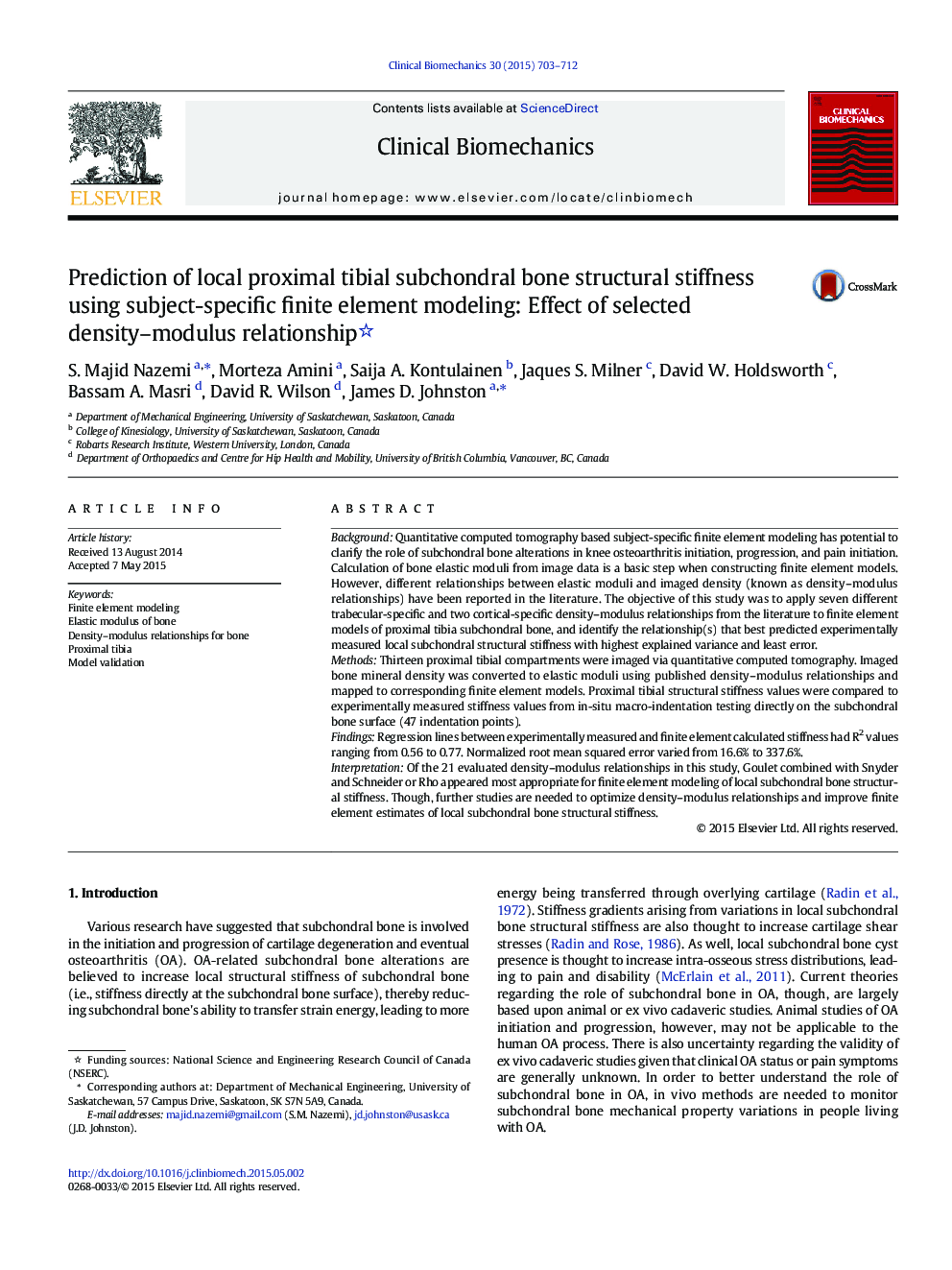| Article ID | Journal | Published Year | Pages | File Type |
|---|---|---|---|---|
| 4050198 | Clinical Biomechanics | 2015 | 10 Pages |
•Modeled proximal tibial structural stiffness using finite element modeling•Validated stiffness predictions using in situ macro-indentation testing•Tested 7 trabecular and 2 cortical equations for predicting stiffness•Finite element modeling explained 56–77% variance in structural stiffness•Goulet combined with Snyder and Schneider or Rho best predicted stiffness
BackgroundQuantitative computed tomography based subject-specific finite element modeling has potential to clarify the role of subchondral bone alterations in knee osteoarthritis initiation, progression, and pain initiation. Calculation of bone elastic moduli from image data is a basic step when constructing finite element models. However, different relationships between elastic moduli and imaged density (known as density–modulus relationships) have been reported in the literature. The objective of this study was to apply seven different trabecular-specific and two cortical-specific density–modulus relationships from the literature to finite element models of proximal tibia subchondral bone, and identify the relationship(s) that best predicted experimentally measured local subchondral structural stiffness with highest explained variance and least error.MethodsThirteen proximal tibial compartments were imaged via quantitative computed tomography. Imaged bone mineral density was converted to elastic moduli using published density–modulus relationships and mapped to corresponding finite element models. Proximal tibial structural stiffness values were compared to experimentally measured stiffness values from in-situ macro-indentation testing directly on the subchondral bone surface (47 indentation points).FindingsRegression lines between experimentally measured and finite element calculated stiffness had R2 values ranging from 0.56 to 0.77. Normalized root mean squared error varied from 16.6% to 337.6%.InterpretationOf the 21 evaluated density–modulus relationships in this study, Goulet combined with Snyder and Schneider or Rho appeared most appropriate for finite element modeling of local subchondral bone structural stiffness. Though, further studies are needed to optimize density–modulus relationships and improve finite element estimates of local subchondral bone structural stiffness.
